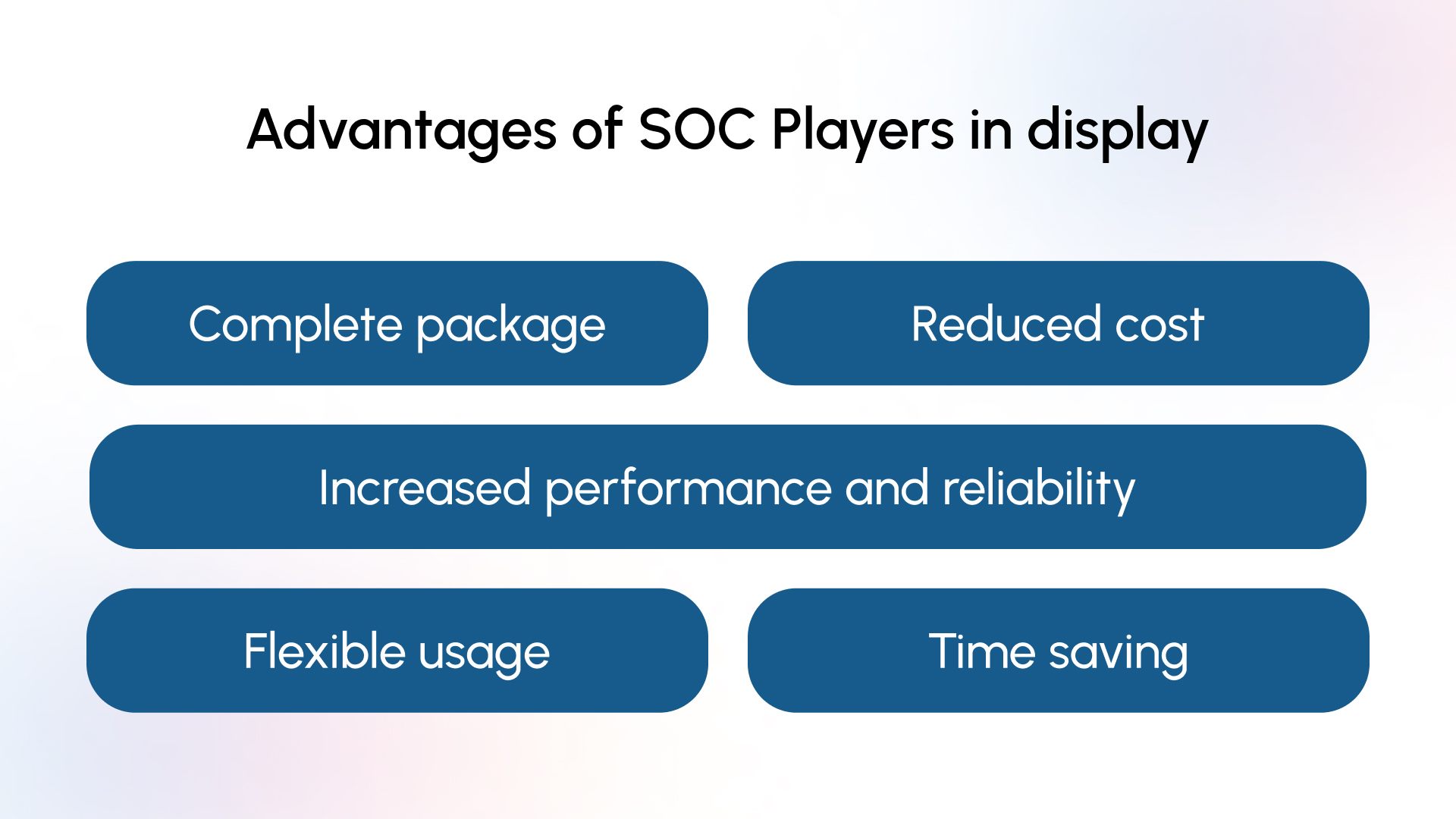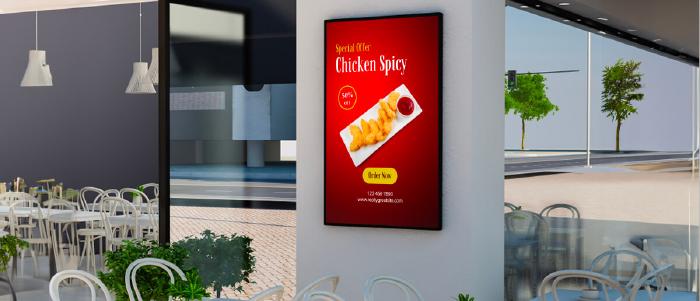
Dec 4 2024
7 min read

Would you prefer carrying separate cameras, music players, and GPS devices, or would you opt for a smartphone that can replace them all? It’s not a difficult choice, is it? In our daily lives, we constantly seek convenience and simplicity, and these desires define modern technologies.
Just as the smartphone revolutionized the way we handle multiple gadgets, the world of digital signage is undergoing its own transformation. Instead of a clutter of cables and bulky media players, SoC (System on a Chip) integrates multiple computer components into a single chip, streamlining the setup.
Out of every 100 SoC displays deployed, less than one display (on average) is expected to experience failure for high-quality displays, making them highly reliable and durable for digital signage networks. Now, If you’re curious and confident enough to explore SoC Players further, let’s explore the details together.

SoC, short for System on a Chip, refers to the integration of an entire system onto a single chip or circuit. It is possible through advanced semiconductor manufacturing processes. In simple terms, we miniaturized and combined various functional units and connected wires into a small compact chip. The transition from bulky desktop computers to sleek laptops involves a process similar to how System on Chip (SoC) technology integrates multiple components into a single chip.
An SoC can include processing units for storage, graphics, audio, and power management. Moreover, modern SoCs can even incorporate machine learning and connectivity capabilities. Looking ahead, the potential of SoC technology is set to expand further, offering exciting possibilities for the future.
When talking about SoC players in display, it eliminates the traditional setup that requires an external media player or computer to manage content. The display is complete in itself, free from cables or any external devices. One can start right away with a network connection, a power supply to the player, and digital signage software to display content.

System-on-chip (SoC) displays have become one of the most used displays in recent times as they have several advantages. These advantages are listed below
SoC displays provide seamless integration. They don’t require additional PCs or other external media players. Since everything is within the displays, there is also no need for cables or metal frames. This enables users to install SoC displays in compact spaces.
While the cost of SoC displays is higher than traditional displays, it is effectively mitigated as the maintenance cost of SoC displays is really low. Due to fewer external components, it is very unlikely that the displays will face any technical issues. And even if any issue arises, it can be solved remotely, significantly reducing maintenance costs.
In addition to that, SoC displays are designed to be more efficient in power consumption than traditional displays as they don’t require any additional media players.
The latest SoC displays contain quad-core processors. Moreover, they are programmed to play 4k content. Thus, they are meant to provide better quality performance than any other displays.
Also, SoC displays are exclusively designed to perform digital signage. Thus, they are made more durable to increase their reliability. Due to this, less than 0.5% of SoC displays face failure.
With numerous input and output points, SoC displays can be easily configured and customized to display multiple screen resolutions. Thus, the users have the flexibility to use their imagination and creativity on SoC displays.
Lastly, SoC displays are great time savers. With SoC displays, all you need is the display itself, any compatible software, and an internet connection, making the setup incredibly easy. Additionally, users can access these displays remotely, further reducing the time and effort required to manage them.

SoC displays represent the latest in technology, and Pickcel is always at the forefront of innovation and technological advancements. Pickcel’s software is designed to run on a variety of hardware platforms, including SoC displays.
By installing Pickcel’s digital signage software directly on the SoC display, you can perform all digital signage operations without needing any external hardware. Even if you opt for Pickcel’s digital signage player, you can still run digital signage content on any SoC display. Here are some reliable options to consider:
Samsung Tizen Smart Signage Displays and TVs: Samsung’s SoC-integrated displays and TVs are among the best in the world. Pickcel’s digital signage software works smoothly on these devices, leveraging the powerful Tizen operating system to handle digital signage applications seamlessly.
LG webOS Displays: LG’s webOS offers excellent compatibility with Pickcel’s digital signage software. All features run seamlessly on these high-quality displays, making content management and web application use easy with its user-friendly interface.
Android TVs and Player Displays: Smart TVs with the Android operating system, including those from Sony, Philips, ViewSonic, and more, are widely used. These displays work efficiently with Pickcel’s digital signage software.
We have thoroughly explored what an SoC display is and how it can benefit you. Now, it should be easier to decide whether to opt for external media players or an SoC display. While SoC displays may have a higher upfront cost than traditional displays, they can reduce the overall expenses of typical digital signage projects by 10-41 percent compared to setups using separate digital signage media players.
Let me give you a cheat code: decide between a straightforward solution or extensive customization. If your priority is a straightforward solution, then an SoC display is all you need.The future is here, and it’s brilliantly integrated into a single chip.





Dec 4 2024
7 min read

Nov 20 2024
8 min read

Nov 8 2024
7 min read

Nov 5 2024
8 min read
Take complete control of what you show on your digital signage & how you show it.
Start Free Trial Schedule My Demo